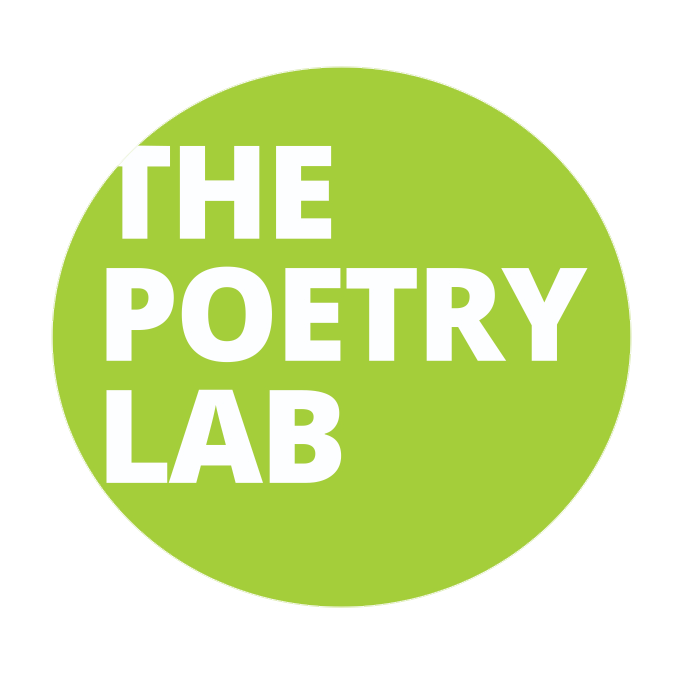How (and Why) To Write Artistic Statements for Poems
When you think of an “artistic statement”, you may imagine the paragraph of text next to a piece of art hanging on a gallery wall. Artistic statements are common with visual art—not so much with poetry.
And maybe that’s to our detriment as poets. Artistic statements allow artists to provide context and depth to a work. Especially when it comes to art that’s more abstract, accompanying artistic statements can provide a lens through which to understand the art or the artist a little bit better.
With poetry, there’s a precedent of not explaining. It can feel like talking about a poem diminishes it, like learning how a magic trick is done. We work so hard to reveal and conceal exactly the details we choose in the poem itself, and now we’re supposed to tell all?
Not exactly. Artistic statements vary nearly as much as art itself; they can be as short as you want, and they only reveal whatever information you, the poet, believe will enhance your work.
PRO TIP 📝 There are “about me” style artist statements that focus on an artist’s overall approach; this article focuses on artist statements for individual poems.
What’s the point of an artistic statement?
Artistic statements can be educational, process-oriented, or personal. My favorite artistic statements essentially function as mini craft articles, where a poet lays out their approach and techniques.
While artist statements won’t be a useful tool for every poet, there can be significant benefits:
Revealing The Poet Behind the Curtain. Artistic statements can make a poem more accessible, revealing the everyday human inspiration or writing process behind even the most brilliant poems.
Deepening or Enhancing the Reading. While most will argue a poem shouldn’t need any context to hit home with a reader, sometimes an explication behind a beautiful work makes it that much better.
As a Tool for Understanding Your Work. Writing an artistic statement prompts you to reflect on your poem in a way you otherwise might not. This is especially true if you’re a writer who ends up somewhere drastically different from where you started. Maybe you thought you wanted to write about your 19th birthday, but it turns out your poem is actually invested in exploring your family’s history of mental illness. Exploring your work in its final form will make you aware of the subjects and aesthetics that are driving your art. You may realize things about your work you didn’t know!
As a Tool for Editing. Some poets gasp in horror at the thought of describing a work-in-progess, but if you’re not one of them, it may be worth a shot. When you find yourself stuck, try writing out in plainer language what you’re attempting to achieve or communicate, your inspiration, and what effect you hope to create. This could help illuminate your own hidden beliefs and expectations about the poem—and perhaps identify creative blocks.
How to write an artistic statement
If you’re anything like me, some poems take a long time to write—and go through such extensive rewrites that sometimes their origins are fuzzy. It can be easy to forget the inspiration or thinking behind a piece. Especially if you’ve been laser-focused on adjusting that last one or two lines you wrestled with.
It’s a common sentiment among poets that talking about our own poems is hard. Trying to suss out the central thesis, vision, or summary for a work that we’ve been crafting carefully over weeks or months may be overwhelming.
My advice? Start casually. Do some free-writing about the poem, asking yourself specific questions and seeing what comes up.
Here are some questions to help you kick off:
➡ This poem emerged from…
➡ My favorite line in this poem is…
➡ This poem was fueled by…
➡ I knew this poem was done when…
➡ Writing this poem was/wasn’t challenging because…
➡ When I started this poem, I was thinking about…
➡ I wrote this poem to explore…
➡ The poem’s title alludes to…
➡ The original title of this poem was…
There’s no precise formula for what you ultimately choose to include in your statement. Artistic statements can be used to share more about the meaning, intention, and process, or shed light on something else about the poem or writer entirely. While they’re not part of the work of the poem, they can add to the reader’s experience of that work. How do you want to add to that experience?
Five examples of artistic statements for poems
While most journals don’t include artistic statements along with the poems they publish (or anything in addition to a 3rd person bio), some break the mold. For example, both Rattle and Chestnut Review accompany each poem with a short statement from the author. Many of the newer poems on Poets.org include one, as well. While not artistic statements, Driftwood Press publishes an interview with every poet they publish about their featured work. Southeast Review’s “About the Work” feature offers deeper insight into published works, offering more examples of poets talking about their poetry.
Below are examples of five artistic statements to help you reflect on your own work, and get a sense of writing-about-writing in action.
1) Karisma Price on her poem “And" (Southeast Review)
“I’m a poet who writes about my anxieties, and I wanted to create a repetitive list poem of all the small and large situations that have brought me discomfort in the past. I decided to start almost every sentence with “and” because (1) This may sound weird, but I’m intrigued by dependent clauses… “ (Read more)
I appreciate how Karisma Price explains her creative process and thinking in writing “And” so clearly. She describes the process behind deciding on the best approach for her poem based on what effect she wanted to create for the reader. She also shares concrete details about the poem, and the exact workshop feedback that was pivotal in her writing process (reinforcing how filled with twists and turns the writing process can be!). This artist statement not only tells us more about the poem, but contains actionable lessons about craft.
2) Mimi Yang on her poem “Dinner Sonnet” (Chestnut Review)
“... The idea for this poem came to me after I had genuinely eaten the best crayfish of my life in my grandparent’s backyard cookout, only to learn that the man who made the crayfish was an abusive father with a young daughter terrified of his voice. Despite understanding her on a personal level, I could not bring myself to stop eating the crayfish or to stop asking him for more.” (Read more)
In this statement on her poem “Dinner Sonnet”, Mimi Yang gives an example of the complex scenarios that can lead a poet to a poem. For me, Yang’s reflection back to where the idea for this poem emerged speaks to one of the greatest powers of poetry: to combine and collapse timelines, allowing us to relive a moment with the hindsight and perspective of a present-day speaker. Yang also discusses the form she uses in the piece—a sonnet in a triptych of sonnets—and how this poem fits into the larger series.
3) Bridget Kriner on her poem, “On Aesthetic Injury” (Rattle)
“This poem is written in response to the recent court decision regarding mifepristone, where federal appeals court Judge James Ho argued that doctors suffer aesthetic injury when they are deprived of the experience of seeing their ‘unborn’ patients…” (Read more)
In a statemnt regarding her poem “On Aesthetic Injury”, Bridget Kriner provides the political context that inspired the poem, including the direct quote from a judge on the ruling in question. In the poem itself, the speaker addresses the topic “slantly”, using a wildlife adventure metaphor to drive the poem forward. The poem feels to this reader like a mic-drop moment, and reading in the statement what exactly is being clapped back against was a satisfying layer of information. I enjoyed the poem without the context, but the addition of it makes it all the more memorable.
4) Andrea Gibson on their poem “In the chemo room, I wear mittens made of ice so I don’t lose my fingernails. But I took a risk today to write this down.” (Poets.org)
“... Even when I lost my eyelashes to chemotherapy I wrote, ‘That’s four hundred wishes I wouldn’t have made otherwise.’ But because I did not want to lose my fingernails too, I’d religiously ice my hands for hours during treatment—unless a poem begged me to type it. ‘Is that line worth losing a nail over?’ my partner would ask. Almost always, I’d smile and say, ‘Yes.’” (Read more)
We writers love to get meta: Andrea Gibson writes about writing in their poem (or, the scene is set by the title as one of the speaker writing) and then writes about writing the poem in their accompanying statement. This is an example of an artistic statement that reflects on the meaning and inspiration behind the piece rather than a focus on craft or the editing process. Most writers will understand the feeling of being compelled to put their lines down on paper, and knowing the lengths Gibson went through to write this poem while undergoing chemotherapy adds another layer of beauty.
5) Iheoma J. Uzomba on her poem, “The Kitchen as Slaughterhouse where Crucifixion is just another Permutation of Loss” (Chestnut Review)
“The poem reverses conventional understanding of the kitchen as a place of creation and perhaps of life-giving because in common understanding, food is a necessary item for survival. The kitchen being a place where food is made then gives it that significance of life. However, this poem alters that convention by identifying how the kitchen itself can be a slaughterhouse, a place for the marring of beings… ” (Read more)
In her statement, Iheoma J. Uzomba provides a poignant description of the work her poem is doing to challenge the convention of a kitchen as a place of life-giving. She uses her artistic statement to give the reader insight into her thought process behind writing the piece, demonstrating the complexity behind the final work. This illustrates how poems can distill larger ideas through the deft use of craft techniques.
Final Thoughts
An artistic statement doesn’t have to reveal anything you don’t want to reveal—and it’s not a defense of your work. You never have to write one if you don’t want to. But for some poets, it can be a useful tool in their education and growth as a writer.
It can also serve as an opportunity to communicate to your audience some of the context that contributed to the art piece they see in front of them. Context that can deepen, complicate, clarify, or even give the reader a peek at your process.
It’s all up to you, poet.
This article was published on October 30, 2023. Written by:


